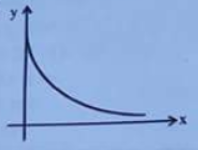If v=(t+2)(t+3) then acceleration(i.edvdt) at t=1 sec.Solution in Gujrati
5m/s2
7m/s2
2m/s2
None of these
The correct Answer is:B
Step by step video & image solution for If v=(t+2)(t+3) then acceleration(i.e(dv)/(dt)) at t=1 sec. by Physics experts to help you in doubts & scoring excellent marks in Class 12 exams.
Updated on:21/07/2023Topper's Solved these Questions
- RACEBOOK - ALLEN CHAPTER - RACEEXERCISE - Basic Maths (Integration)
12 Videos
- RACEBOOK - ALLEN CHAPTER - RACEEXERCISE - Basic Maths (Graphs))
28 Videos
- RACEBOOK - ALLEN CHAPTER - RACEEXERCISE - Basic Maths (Trigonometry)
22 Videos
- NEWTONS LAWS OF MOTIONBOOK - ALLEN CHAPTER - NEWTONS LAWS OF MOTIONEXERCISE - EXERCISE-III
28 Videos
- SIMPLE HARMONIC MOTIONBOOK - ALLEN CHAPTER - SIMPLE HARMONIC MOTIONEXERCISE - Example
1 Videos
Similar Questions
Find the value of x1, so that ∫x10ydx=5

View SolutionWhich of the following equation is best representation of following graph's?

View SolutionConvert the angle from degree to radian :
(a) 30∘(b) 45∘(c) 60∘(d) 90∘(e) 120∘(f) 135∘(g) 210∘(h) 270∘(i) 315∘
View SolutionAssertion: The driver in a vechicle moving with a constant speed on a straight road is in a non-inertial frame of referance.
Reason: A reference frame in which Newton's laws of motion are applicable is non-inertial.
View SolutionA rod with rectangular cross section oscillates about a horizontal axis passing through one of its ends and it behaves like a seconds pendulum, its length will be
View Solutionif u=(2bt)/(1+t^(2)),v=a(1-t^(2))/(1+t^(2)) then (du)/(dv)
View SolutionIf velocity of particle is given by v=2t^4 , then its acceleration ((dv)/(dt)) at any time t will be given by..
View SolutionIf v=(t2−4t+105)m/s where t is in second. Find acceleration at t=1 sec.
View SolutionStarting from rest, the acceleration of a particle is a=2(t−1). The velocity (i.e.v=∫ a dt ) of the particle at t=10 s is :-
View SolutionIf displacement S at time t is S=t3−3t2−15t+12, then acceleration at time t=1sec is
View SolutionIf v is the velocity and f is the acceleration of a particle, at time t, such that t=v22, then : −dfdt=
View SolutionIF t=v22, then (−dfdt) is equal to ,
(where f is acceleration)
View SolutionIf v = 3t^2 - 2t + 1 , find the value of t for which (dv)/(dt) = 0
View SolutionIf ∫102tdtt+3=Aand∫aa−12tdtt+b−1=2a−bA, then b is equal to
View SolutionThe motion of a body is defined by (dv(t))/(dt) = 6-3 v(t) where v (t) is the velocity (in m/s ) of the body at time t (in seconds ). If the body was at rest at t= 0 , find its velocity (in m/s ) when the acceleration is half the initial value.
View SolutionIf t=(v^(2))/(2) , Then (-(df)/(dt)) Is the value of, (where f is the acceleration)
View Solution
